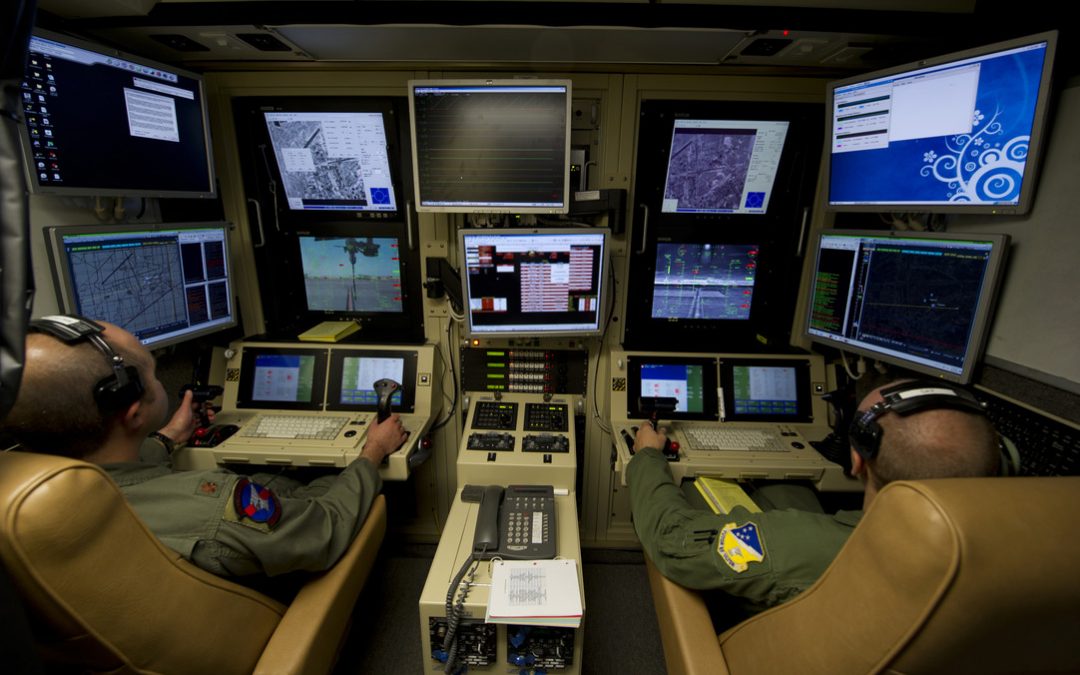When you are in command of a remotely piloted aircraft, commands are usually delivered through a computer and not through a stick and throttle, therefore, the perception of the operation of the aircraft in general is a bit different. In addition, and logically, the engine is not heard, erratic operation can only be captured by observing the control instruments that are received through telemetry sent by the RPA. Nor is a slower response from the controls seen as stall speed is approached, so constant speed monitoring is very important, especially when flying in turbulent conditions or during the various takeoff and landing phases. Because of this, the effective interaction between the machine and man may require aids that allow the pilot to maintain situational awareness and avoid losing control of the plane inadvertently. In the ground control station (GCS) planning and control of the mission is carried out, normally the execution of the flight is carried out by the computers and thus the operator focuses on the execution of the mission through the handling of sensors within the airplane. Being focused on the mission, can easily cause the loss control or the air traffic situation surrounding the operation or environment in which the UAV flies, so it is necessary that there are alarms that warn the pilot of the approach of an unsafe condition. If these alarms are too sensitive to flight variations, they could cause the pilot to be continually distracted from the mission and perform it ineffectively, so warnings are required to be balanced and weighted. In case of emergency, the pilot will normally have to “remove” the execution of the flight from the computers and fly in manual mode, which also requires elements that make it possible to supply the information not available when not on the aircraft, such as the perception of the environmental conditions in which the flight takes place. It requires traffic information and spatial presentation of the aircraft, among others.

It is important to define roles and responsibilities for the interaction and integration of the crew with the system, from mission planning, supervision and execution of tasks, assignment and coordination of tasks. This in the different dimensions that are verified during the operation of an unmanned aircraft. This should include the automatic flight system, real-time flight parameter telemetry, information on engine parameters and electrical power systems, fuel, state of the aircraft link, aeronautical communications, flight position systems and navigation systems . Considering the evolution of technology, in the future it may be considered risky to fly on manned aircraft and establish segregated zones for those who want to fly their aircraft from an integrated cabin to the aircraft. The children of our children may consider incomprehensible irresponsibility, the possibility that a person will be in command of the aircraft in which they will fly. It is possible that only in the museums can they see planes designed to carry a crew. It may seem possible to happen in the near or distant future, but the reality of unmanned aircraft will increase to a very high rate of growth. Charles Darwin pointed out: “It is not the strongest nor the most intelligent that survives, but the one that most adapts to the changes.” We must look for the aeronautical vanguard through the research and development of innovative initiatives, for this we must direct efforts to know what exists today and establish the path that will lead us to be part of this technological advance in what concerns the Drones. There are then, matters on which to deepen, to wait for that future on solid foundations and allow the integration of these new capacities in the most harmonious and safe way possible. One of these matters is the selection of crews from the point of view of aerospace medicine.

Nice article!